| Home | Start key | Fact sheets | Glossary | Common flowers | ||
This feature asks you to recognize members of the Asteraceae (composite) family. You must decide if your cut flower is in this family or not. Your state choice determines the appearance of other features in the key. If you choose genus in the Asteraceae, a set of features appears that pertain specifically to or are relevant to this family. If you choose genus not in the Asteraceae, a different set of features pertaining to the rest of the taxa appears.
If you are not sure if your cut stem is in the Asteraceae or not, use the information and illustrations below to help make this determination. If after doing this you are still unsure, the best strategy is to choose one state. If this doesn't lead to an identification, restart the key and choose the other state.
Although not recommended, you may also choose both states of this feature; in this case all taxa (both Asteraceae and non Asteraceae) will be retained in Entities Remaining. But first read a few cautionary notes.
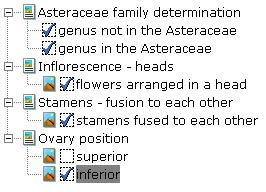
Heads variously arranged, often in panicles, racemes, cymes, or corymbs; phyllaries in one or more series; small, sessile flowers (florets) crowded onto a flat to conical or spherical receptacle, these sometimes subtended by bracts or bristles borne on the receptacle; heads range in size from a few millimeters to ca. 20 cm in diameter, and bear one to many florets; florets develop from the outside to the center.
Flowers
of three types:
Disc florets perfect or staminate with a nonfunctional style, actinomorphic, sympetalous, usually tubular, with a short, 5-lobed limb (Figure 1).
Ray florets perfect with 5 apical teeth (in ligulate heads), or carpellate or sterile with 2 or 3 apical teeth (in radiate heads); zygomorphic, with a short tube and an extended, strap-shaped limb (Figure 2).
Bilabiate florets with 3-lobed upper lip and two lower lips (restricted mostly to the Mutisieae tribe).
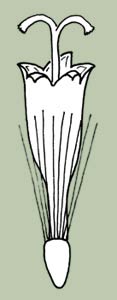 |
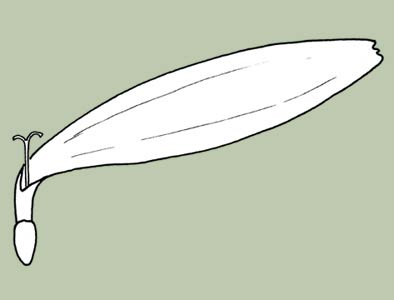 |
|
| Figure 1 disc floret with pappus |
Figure 2 carpellate ray floret without pappus |
|
Heads are: discoid, consisting solely of disc florets
(Figure 3); radiate (most commonly), with central disc florets and ray florets
around the periphery (Figure 4); ligulate, consisting solely of ray (ligulate)
florets; or (only in the Mutisieae and Barnadesieae tribes) consisting of bilabiate
florets and ray or disc florets.
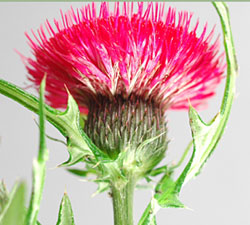 |
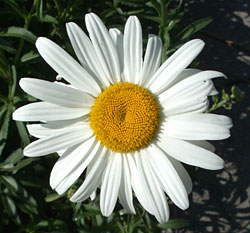 |
|
| Figure 3 discoid head (Cirsium japonicum) |
Figure 4 radiate head |
|
Pappus of hairs, bristles, scales, or a short cup.
Stamens fused to the corolla, with distinct filaments and anthers united and forming a cylinder around the style; anthers with apical or basal appendages of different shapes and sizes (Figures 5A and 5B).
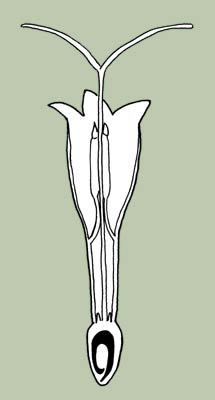 |
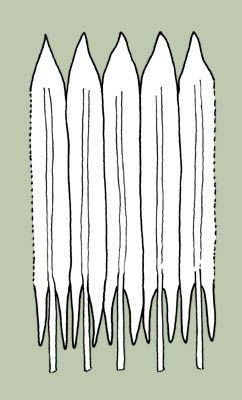 |
|
| Figure 5A disc floret, longitudinal section |
Figure 5B stamens, expanded (abaxial surface) |
|
Style bifid (Figure 5A), sometimes with branches undivided (in staminate florets); stigmatic surface confined to inner surface of branches or thin marginal stigmatic lines; pollen-collecting hairs on outer surface.
fruit an achene
Corolla: Note that in the Asteraceae the single floret whorl is called a corolla, regardless if there is a pappus or not.
Doubles: In the Asteraceae, double cultivars are generally based on radiate heads, and have more than the normal number of ray florets; the ray florets are former disc florets. The individual florets, however, do not have extra petals or corolla whorls.
Among the cut flowers in this key, those in the Anthemideae, Astereae, and Calenduleae tribes may look similar, particularly the double cultivars.
top